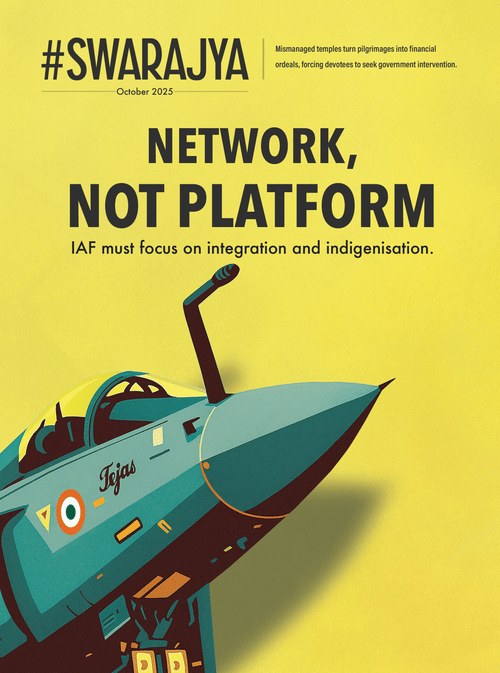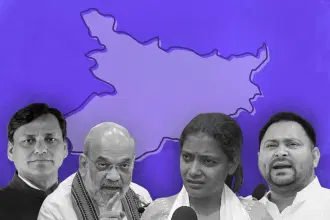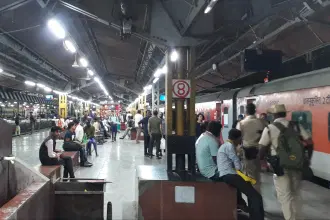News Brief
GST 2.0: Day 1
Swarajya Staff
Sep 22, 2025, 09:26 AM | Updated 09:38 AM IST
Save & read from anywhere!
Bookmark stories for easy access on any device or the Swarajya app.
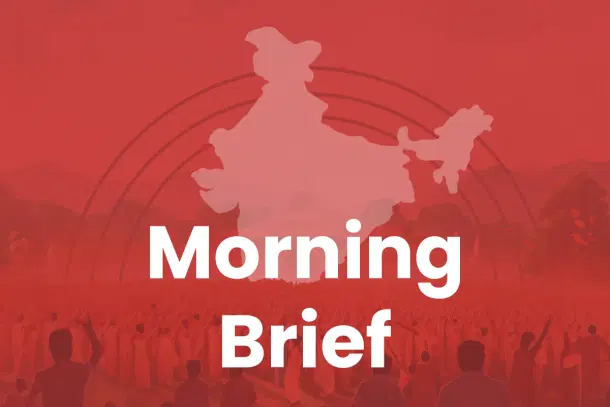
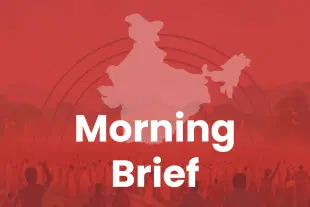
Good morning. Today, 22 September, 2025, is the day new GST rates take effect. Except for tobacco and similar products, the rates are lower for almost all good and service across the economy.
The breakfast you are having while reading this, is cheaper.
Milk and milk-based products: While fresh milk/ will continue to attract zero per cent GST as earlier, UHT (Ultra High Temperature) milk has had its GST reduced from 5 per cent to 0 per cent. Paneer has also had its GST reduced from 12 per cent to 0 per cent. Butter, Ghee, Cheese, and Other Dairy Fats have had their GST reduced from 12 per cent to 5 per cent.
Milk Cans made of Iron, Steel, or Aluminium have had their GST reduced from 12 per cent to 5 per cent. Plant-Based Milk Beverages, excluding Soya Milk, have had their GST reduced from 18 per cent to 5 per cent.
Breads: Breads and Indian breads—all of them now fall in the zero per cent GST bracket.
Sugar: Refined sugar etc. earlier attracted 12-18 per cent rate depending on processing/packaging in many cases. Now, it falls in the 5 per cent GST bracket.
Tea: Branded and packaged tea was levied with 5 per cent GST earlier and continues at those rates.
~*~
Prime Minister Narendra Modi on Sunday (21 September) addressed the nation ahead of the roll out of the next-generation GST reforms.
The Goods and Services Tax (GST) Council, in its 56th meeting earlier this month, cleared the GST 2.0 under the eight-year old indirect tax regime.
Wishing everyone on the eve of Navratri, Prime Minister Modi in his address said that along with Navratri, the country will also be celebrating "GST Bachat Utsav" (GST Savings Festival) from the 22nd.
Here are the key takeaways from PM Modi's address:
Cheaper Daily Essentials
The Prime Minister said the new structure would provide major relief to households.
Daily-use items such as food products, medicines, soap, and health and life insurance would either be exempt from tax or fall under the 5 per cent slab.
“99 per cent of Goods that previously had 18 per cent tax, will now be taxed at 5 per cent,” he said.
Middle Class Relief
Highlighting benefits for the middle class, Modi recalled that income up to Rs 12 lakh has been made tax-free.
He noted that when combined with GST cuts, citizens would save more than Rs 2.5 lakh crore annually.
PM Modi added that the poor and neo middle class have gotten a double bonanza.
Travel and Services Made Affordable
The Prime Minister said tourism would also benefit as hotel room rents across most categories had been reduced.
“Travel will be cheaper, because room rent for maximum hotels has been reduced,” he remarked.
MSMEs and Small Businesses
Modi stressed that micro, small and medium enterprises would be among the biggest gainers from GST 2.0.
With reduced tax burdens and simplified compliance, he said these reforms would strengthen the foundation of Viksit Bharat.
“MSMEs and small biz will benefit a lot, their business will get a boost, they will have to pay lesser taxes,” he said.
Push for Made in India
The Prime Minister urged people to promote and purchase Indian products.
“Indian made goods were of a superior quality. We have to gather that reputation back,” he said, calling for shops to be decorated with Made in India items.
He added, “Made in India goods should be accepted worldwide, should surpass all parameters and quality standards.”
Call to States
Appealing to state governments, Modi asked them to boost manufacturing under the Atmanirbhar Abhiyan.
“I urge all state governments to boost manufacturing in their states under this atmanirbhar abhiyan,” he said.
Remembering the Pre-GST Era
The Prime Minister reflected on the period before GST, when traders had to navigate a complex web of taxes such as octroi, VAT, excise, and service tax.
He recalled that transporting goods between Indian cities was so difficult that companies preferred routing consignments via Europe.
“It was easier to send goods from Bengaluru to Europe than from Bengaluru to Hyderabad,” Modi recounted.
He added that GST, introduced in 2017, became possible only after extensive consultations with all states and stakeholders. “
The dream of ‘One Nation, One Tax’ was realised,” he said.
How did India's indirect taxation system look before GST?
Before GST's 2017 introduction, India operated under a fragmented indirect tax system with multiple overlapping levies.
The previous regime included VAT, sales tax, service tax, excise duty, luxury tax, entertainment tax, advertisement tax, and various state cesses, creating operational nightmares for businesses filing multiple returns across different tax regimes.
The system created massive logistical bottlenecks, with trucks spending 15 to 20 days traveling from Karnataka to Delhi due to checkpoints at 10 different state borders.
GST's "one country, one tax" approach eliminated these delays.
But why begin with four tax slabs? Why not two, like now?
The four-slab GST structure (5 per cent, 12 per cent, 18 per cent, and 28 per cent) wasn't arbitrary but a calculated compromise. While the government determined a revenue-neutral rate of 15.5 per cent, implementing this uniform rate would have caused severe price shocks.
The strategic slab design prevented inflation: 5 per cent covers essential items for vulnerable sections, 12 per cent targets mid-range goods, 18 per cent serves as the standard rate, and 28 per cent applies to luxury items. This structure accommodated India's federal system, where states surrendered their constitutional taxing rights while the Centre relinquished exclusive service tax control.
Have there been any other reforms in GST, apart from rate reductions?
Yes. The GST Council also approved a simplified registration scheme designed to streamline the process for small and low-risk businesses, offering automated approval within just three working days from the date of submission of application.
The optional scheme, set to become operational from November 1, 2025, targets businesses with limited tax liability and those classified as low-risk applicants by the tax authorities.
Additionally, the Council also announced that the GSTAT (GST Appellate Tribunal) would become operational to receive appeals by the end of September and commence hearing proceedings by the end of December this year. The GSTAT being non-operational was one of the major grievances of enterprises.
